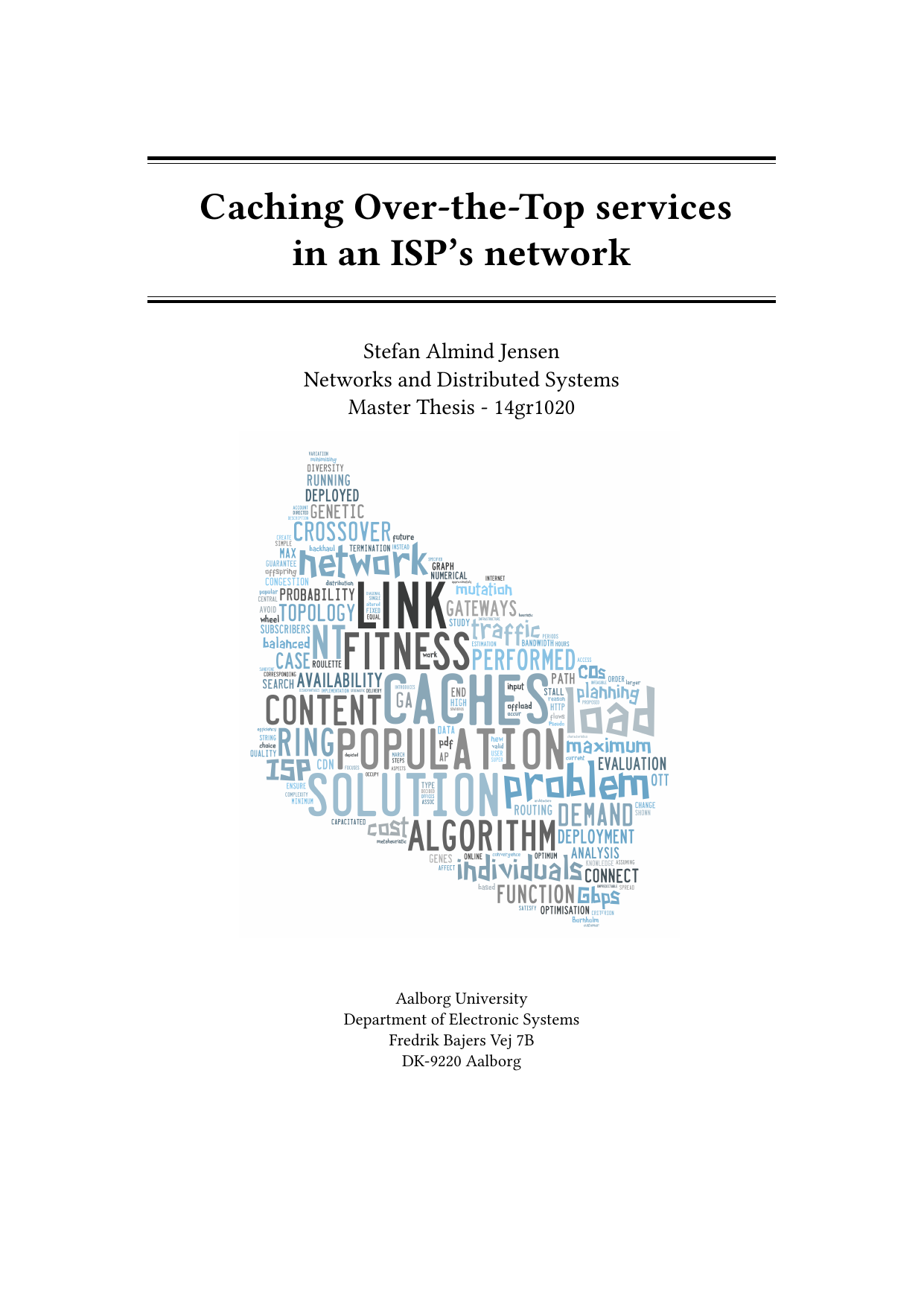
Caching over-the-top services in an ISP's network
Translated title
At cache over-the-top tjenester i en ISPs netværk
Author
Term
4. term
Education
Publication year
2014
Submitted on
2014-06-02
Pages
101
Abstract
Da over-the-top (OTT) content udnytter ca. 67 % af fixed access downstream Internet trafik i spidsbelastningsperioder i Nordamerika, har OTT indholdsleverandører placeret caches internt i forskellige ISP netværk. Denne afhandling præsenterer en metode til planlægning af caches til OTT-tjenester i en internetudbyders netværk for at give en aflastning til backhaul. Denne aflastning er fundet ved at minimere det maksimale link's belastning. Gode placeringer af caches er fundet ved hjælp af en genetisk algoritme (GA) med en routing algoritme og genetiske operatorer, der er målrettede mod at løse Link Load Balanced capacitated Facility ( LLB -CFL ) problemmet. Som input er Geographical Information System (GIS) data fra Bornholm, Danmark, brugt til at generere realistiske resultater. Specifikationer for demand og caches leveres via et case study af Netflix. Resultaterne er givet for før og efter billedet ved placering af caches, en cost-fitness trade-off analyse samt en numerisk evaluering af link belastninger for både cache og gateway trafik. Resultaterne viser, at den foreslåede metode giver et link load balanceret netværk.
Due to over-the-top (OTT) content utilising approximately 67% of the fixed access downstream Internet traffic during peak periods in North America, OTT content providers have deployed caches internally in various ISP networks. This thesis presents a method for planning caches for OTT services in an ISP’s network to provide an offload to the backhaul link. This offload is found by minimising the maximum link load. Good deployments of caches are found using a Genetic Algorithm (GA) with a routing algorithm and genetic operators that are highly targeted at solving the Link Load Balanced Capacitated Facility Location (LLB-CFL) problem. As input, Geographical Information System (GIS) data from Bornholm, Denmark, is used to generate realistic results. The demand and caches specifications are provided through a case study of Netflix. Results are given for the before and after picture of deploying caches, a cost-fitness trade-off analysis and a numerical evaluation of the link loads for both cache and gateway traffic. The results show that the proposed method provides a highly offloaded (link load balanced) network.
Keywords
Genetic algorithm ; Cache ; Over-the-top ; OTT ; GA ; Network planning ; network ; ISP ; link load ; balance ; link load balanced ; fitness ; crossover ; mutation ; genetic ; planning ; routing algorithm ; routing ; ring ; double ring ; maximum link load ; minimise ; cdn ; netflix ; youtube ; offload ; gateways ; caches ; caching ; Internet ; optimisation ; combinatorial optimisation ; facility location ; capacitated ; demand ; genes
Documents
